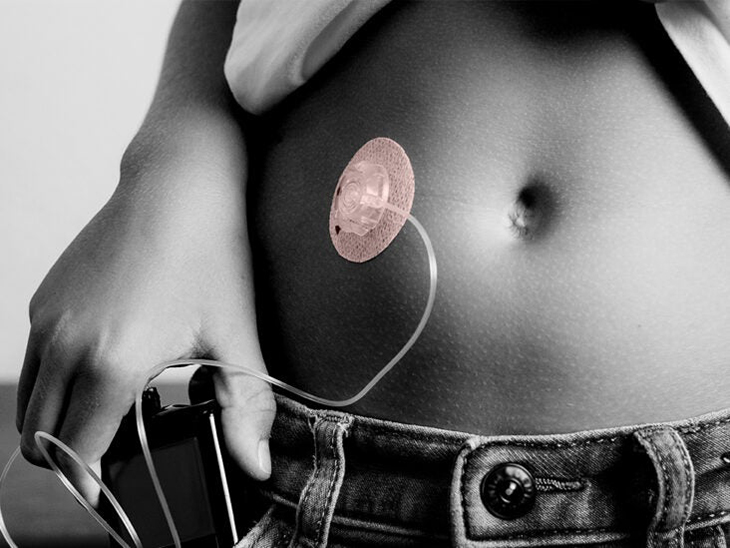Artificial Pancreas Work Better Than Jabs for Managing Blood Sugar Levels In Type 2 Diabetes Patients

In another successful trial from Cambridge University, scientists have once again explored their artificial pancreas, which helps patients with Type 2 diabetes better manage their blood sugar levels.
The device and app, which was developed by the researchers and uses an algorithm, managed to double the duration of time the patients’ blood sugar levels were on point. It also was able to reduce the times when patients’ blood sugar levels were considered too high by at least 50%.
Moreover, the study results were released around the same time that the National Health Service (NHS) of the United Kingdom announced that the device is okay for public use.
Created by the Cambridge University’s Wellcome-MRC Institute of Metabolic Science, the device combines the use of the CamAPS HX app with the off-the-shelf glucose monitor and insulin pump. The app is designed to predict how much insulin is required by the patient to keep their blood glucose at a healthy level.
In earlier studies, of which one was based on 875 patients, it was discovered that artificial pancreas that were running on a comparable algorithm worked in patients with type-1 diabetes, even including very young children. However, unlike the earlier devices, the new one works automatically, meaning patients don’t need to inform their artificial pancreas that they’re going to eat.
For this study, the researchers got 26 patients from a Cambridge diabetes clinic where patients were randomly assigned to two groups. The first group was given the artificial pancreas for eight weeks, after which they were made to switch to the standard therapy of multiple insulin injections per day. The second group started on the standard therapy, then were made to switch to the artificial pancreas after eight weeks.
In order to effectively check the effectiveness of the artificial pancreas, the team used different measures. The first was checking the proportion of time patients spent with their glucose levels within the target range between 3.9 and 10 millimoles per liter, which happens to be the standard measure of glucose levels in blood.
As for patients using the artificial pancreas, they use two thirds – or 66 percent – of their time with their glucose levels within the target range, which was double that amount for the control group at 32 percent. On the other hand, patients that did the standard therapy ended up with high glucose levels 67 percent of the time. This percent halved to 33 percent when they were using the artificial pancreas.
Moreover, when using the control therapy, the average glucose levels fell from 12.6 millimoles per liter, and down to 9.2 millimoles per liter with the artificial pancreas. Plus, the app managed to lessen the levels of a molecule also in patients, named glycated hemoglobin.
The protein located within the red blood cells, called hemoglobin, carries oxygen throughout the body, and glycated hemoglobin develops when the glucose in the blood becomes ‘glycated.’ Doctors are able to get an overall picture of what someone’s average blood sugar levels are over a period of week or months when they measure this. So, for those with diabetes, the higher the glycated hemoglobin levels, the higher the risk of developing diabetes-related complications.
The research also showed that after the control therapy, the glycated hemoglobin levels were at 8.7 percent ton average, lowering to 7.3 percent when using the artificial pancreas.
In addition, the study findings, that were published in the January 2 publication of Nature Medicine journal, shared that patients also didn’t experience their blood sugar levels falling to a dangerous level – a condition called hypoglycemia.
According to nine out of ten of the study participants, they were happy to have their blood sugar regulated by the app and artificial pancreas since it allows them to spend less time overall having to manage their condition. Furthermore, they were also happy with the fact that they didn’t have to inject themselves, making them ‘more confident in managing their blood sugar.’
However, some of the downsides were an increased level of increased anxiety about the thoughts of developing hyperglycemia. As a result, the research team explained that this may also make users more aware of the machine and monitoring their blood sugar levels, as well as other ‘practical annoyances’ when using these types of devices.
Additionally, the team was successful on using the artificial pancreas on patients that needed kidney dialysis.
Study co-lead and author, Dr. Charlotte Boughton, said, “The artificial pancreas can provide a safe and effective approach to help them, and the technology is simple to use and can be implemented safely at home.”
Study co-author, Dr. Aideen Daly, also shared, “One of the barriers to widespread use of insulin therapy has been concern over the risk of severe ‘hypos’ – dangerously low blood sugar levels. We found that no patients on our trial experienced these and patients spent very little time with blood sugar levels lower than the target levels.”
Across the world, at least 415 million people deal with diabetes, and from that number, at least 4.9 million are Brits. This costs the NHS around £10 billion each year.
While normally, insulin usually controls blood sugar levels, when it comes to type 2 diabetes, insulin production is interrupted. When left untreated, it causes major damage, such as kidney, eye, nerve damage and even heart disease.
Since this last successful study, the team plans to carry out a bigger study to further build on their findings, and have even submitted their device for regulatory approval so that hopefully one day, it will be available for all patients across the globe.



